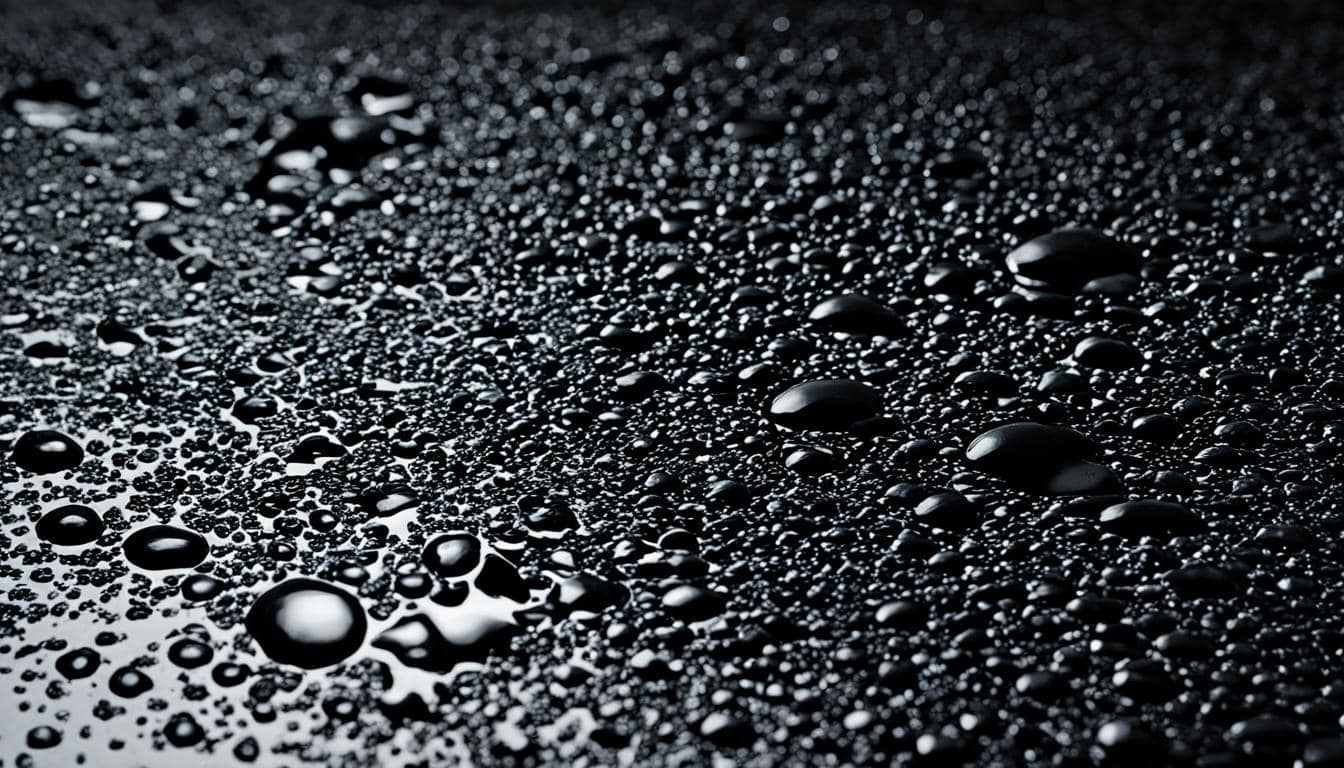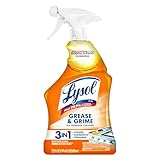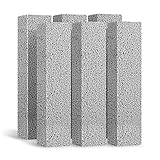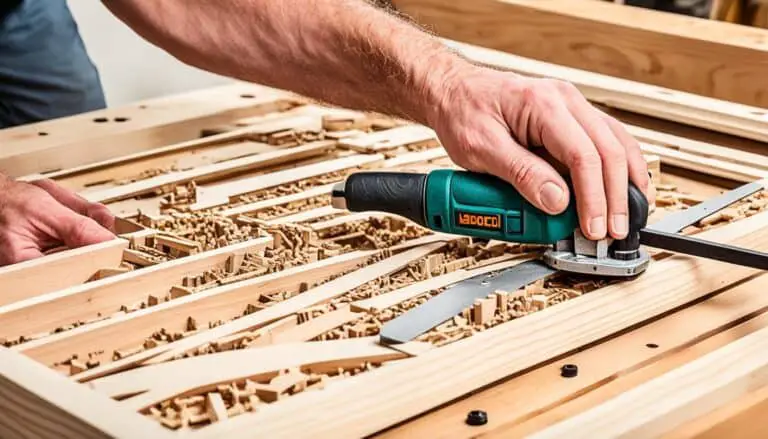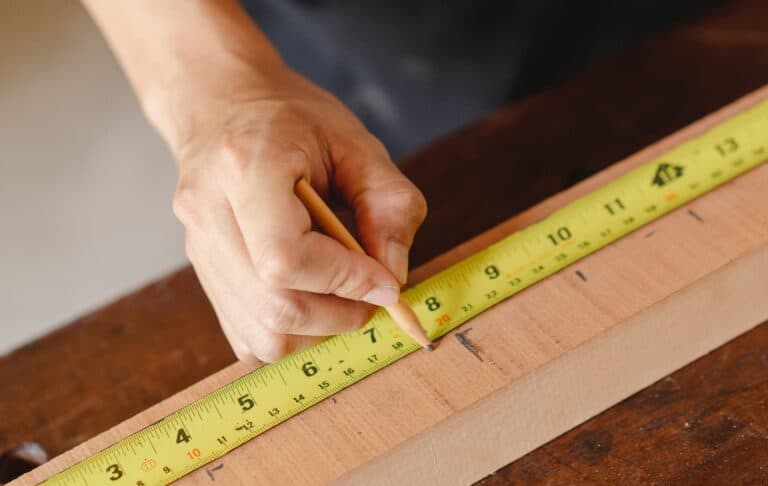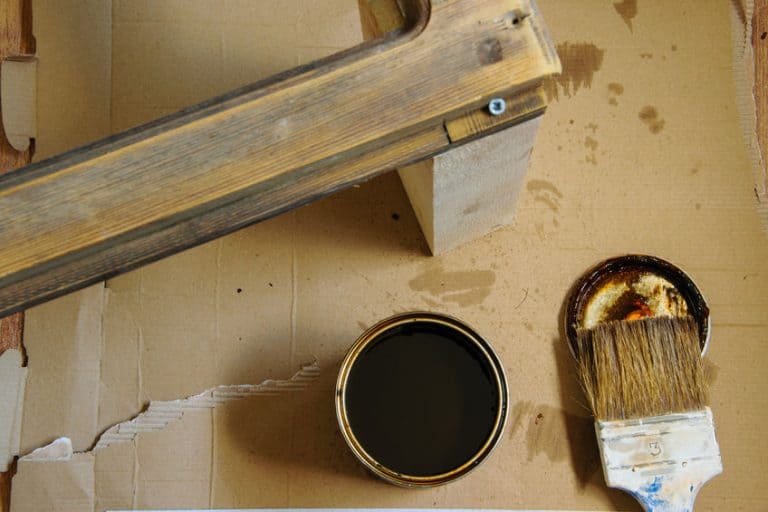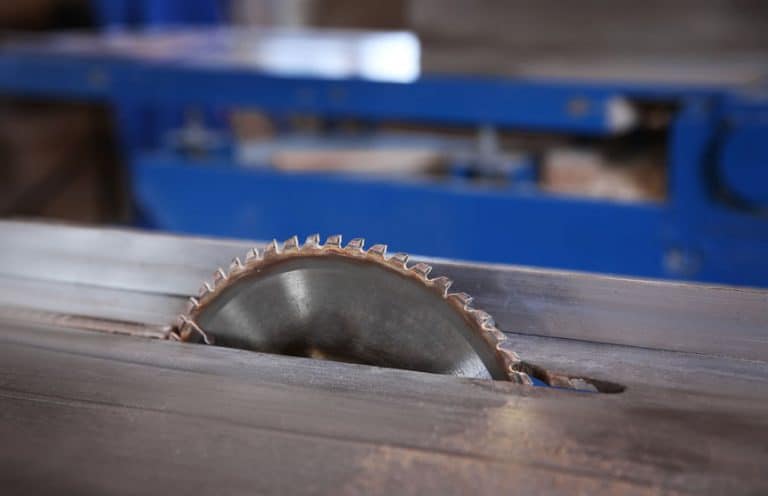Have you ever struggled with stubborn black stains on various surfaces in your home? From wood furniture to clothes, carpets, and more, black stains can be quite challenging to remove. But fear not! We have the ultimate guide to help you get rid of those pesky black stains and keep your surfaces looking spotless.
Black stains can be caused by a variety of factors, such as mold, mildew, water damage, or even chemical reactions. The key to successfully removing black stains is using the right techniques and products tailored to each specific surface. In this article, we will explore the best methods for removing black stains on wood, clothes, carpets, and provide practical tips for black stain prevention.
Key Takeaways:
- Different surfaces require specific cleaning methods for black stain removal.
- Vinegar and baking soda are effective natural remedies for removing black stains.
- Regular maintenance and preventive measures can help prevent black stains from appearing.
- Commercial stain removal products may also be used for tough stains.
- Follow the recommended cleaning techniques for each surface to avoid damage.
Tips for Removing Stains from Stainless Steel Appliances
Stainless steel appliances are a beautiful addition to any kitchen, but they can easily become stained and lose their shine over time. Daily cleaning and maintenance are essential for keeping them looking their best. Whether you’re dealing with water stains, grime, or tough blemishes, here are some effective tips for removing stains from stainless steel appliances:
Daily Cleaning
To keep your stainless steel appliances looking pristine on a daily basis, all you need is a microfiber cloth and some water. Use the cloth to wipe away any smudges, fingerprints, or water stains. Make sure to follow the grain of the stainless steel to prevent scratching.
Extra Grime
If your appliances have accumulated extra grime, such as grease or food residue, dish soap can be your best friend. Apply a few drops of dish soap to a damp microfiber cloth and gently scrub the affected areas. Rinse with water and wipe dry to reveal a clean and shiny surface.
Tough Stains
For tougher stains that don’t seem to budge with water and dish soap, it’s time to bring out the big guns. Distilled white vinegar and baking soda are excellent natural cleaners for stainless steel. Create a paste by mixing equal parts vinegar and baking soda, then apply it to the stain. Let it sit for a few minutes before gently scrubbing with a soft cloth. Rinse with water and dry thoroughly.
Commercial Cleaners
When all else fails, commercial cleaners specifically designed for stainless steel appliances can be a great option. These cleaners are formulated to remove stains, oxidation, and even rust from stainless steel surfaces. Follow the instructions provided by the manufacturer and make sure to wipe your appliances dry after the cleaning process.
Expert Tip: When using any cleaner or scrubbing your stainless steel appliances, it’s important to test it on an inconspicuous area first to avoid any potential damage.
Remember, regular maintenance and cleaning are key to preventing the buildup of stains on your stainless steel appliances. By following these tips and incorporating them into your cleaning routine, you can easily remove stains and keep your appliances looking shiny and spotless.
| Cleaning Method | Effectiveness | Recommended For |
|---|---|---|
| Microfiber cloth and water | ✅✅ | Daily cleaning and water stains |
| Dish soap | ✅✅✅ | Extra grime and grease stains |
| Vinegar and baking soda | ✅✅✅✅ | Tough stains |
| Commercial cleaners | ✅✅✅ | Stainless steel oxidation and rust stains |
Techniques for Removing Stubborn Toilet Stains
When it comes to tackling stubborn toilet stains, different types of stains require different cleaning techniques. Whether you’re dealing with hard water stains, mineral deposits, rust stains, or mold and mildew, there are effective cleaning solutions to help you restore your toilet to its original gleaming state.
For hard water stains, a combination of vinegar and baking soda can work wonders. Mix equal parts of vinegar and baking soda to create a paste, then apply it to the stained areas. Let it sit for a few minutes before scrubbing with a toilet brush. The acidity of the vinegar helps break down the mineral deposits, while the abrasive action of baking soda helps remove the stains.
If you’re dealing with rust stains, a pumice stone can be your best friend. Wet the pumice stone and gently scrub the stained areas. Be careful not to apply too much pressure or scrub too vigorously, as this can cause damage to the toilet surface. The abrasive nature of the pumice stone helps remove the rust stains, revealing a clean and bright toilet bowl.
When it comes to mold and mildew stains, a combination of vinegar and ammonia can be effective. Mix equal parts of vinegar and ammonia in a spray bottle, then spray the solution onto the stained areas. Let it sit for a few minutes before scrubbing with a toilet brush. The acidity of the vinegar helps kill the mold and mildew, while the ammonia helps remove the stains.
Prevention is key when it comes to stubborn toilet stains. Using a toilet bowl cleaner regularly can help prevent stains from forming in the first place. Additionally, always test any cleaning products before applying them to a large area of your toilet, and remember to follow safety precautions.
By employing the right cleaning techniques and taking proactive measures, you can conquer even the most stubborn toilet stains and keep your toilet looking clean and fresh.
Strategies for Removing Stains from Sinks and Showers
Stains in sinks and showers can be unsightly and difficult to remove. Common culprits of these stains include soap scum, hard water deposits, and mineral buildup. Fortunately, there are effective cleaning solutions and prevention techniques that can help you keep your sinks and showers stain-free.
Tackling Soap Scum
Soap scum is a common issue in sinks and showers, especially in areas with hard water. To remove soap scum, you can try using a mixture of vinegar and baking soda. Simply create a paste with equal parts vinegar and baking soda, apply it to the affected area, let it sit for a few minutes, and then scrub it off with a sponge or scrub brush. For stubborn soap scum, there are also commercial soap scum removers available on the market.
Dealing with Hard Water Stains
Hard water stains can leave behind a residue on sinks and showers that can be tough to remove. One natural cleaning solution for hard water stains is lemon juice or vinegar. These acidic substances can break down the mineral deposits and help dissolve the stains. Simply apply lemon juice or vinegar to the affected area, let it sit for a few minutes, and then scrub it off. For more stubborn stains, you may need to repeat the process or use a stronger cleaning solution.
Removing Mineral Deposits
Mineral deposits can build up over time, leaving behind white, chalky stains on sinks and showers. To remove mineral deposits, you can create a cleaning solution using vinegar and water. Mix equal parts vinegar and water, apply it to the affected area, let it sit for a few minutes, and then scrub it off. This solution is effective at breaking down the mineral deposits and making them easier to remove.
Preventing Stains
Prevention is key when it comes to keeping sinks and showers stain-free. Regular cleaning and maintenance can help prevent stains from forming in the first place. Wipe down surfaces after each use to remove any soap scum or hard water residue. Use protective pads under bottles and containers to prevent mineral deposits from forming. Additionally, consider using a water softener to reduce the effects of hard water on your sinks and showers.
By following these strategies for removing stains and implementing preventative measures, you can keep your sinks and showers looking clean and stain-free.
| Stain Type | Cleaning Solution |
|---|---|
| Soap Scum | Vinegar and baking soda Commercial soap scum remover |
| Hard Water Stains | Lemon juice Vinegar |
| Mineral Deposits | Vinegar and water solution |
Common Stains and Cleaning Processes for Stone Surfaces
When it comes to stone surfaces, different types of stains require specific cleaning processes to ensure effective stain removal. Here are some common stains that you may encounter on stone surfaces and the recommended cleaning solutions:
- Grease Stains and Oil-Based Stains: Liquid cleansers, mineral spirits, or acetone can be used to remove grease stains and oil-based stains from stone surfaces. Apply the cleaning solution to the stained area, let it sit for a few minutes, then gently wipe it away with a soft cloth.
- Organic Stains: For organic stains such as food or drink spills, a mixture of hydrogen peroxide and ammonia can be used. Apply the solution to the stained area, scrub gently with a soft brush, and rinse thoroughly with water.
- Algae and Mildew Stains: To remove algae and mildew stains from stone surfaces, a mixture of ammonia, bleach, or hydrogen peroxide and water can be used. Apply the solution to the stained area and let it sit for a few minutes before scrubbing gently with a soft brush. Rinse the area thoroughly with water.
- Ink Stains: Ink stains can be challenging to remove from stone surfaces. However, you can try using bleach, hydrogen peroxide, lacquer thinner, or acetone. Apply the cleaning solution to the stained area, let it sit for a few minutes, then gently scrub with a soft brush. Rinse the area thoroughly with water.
- Smoke Stains: Smoke stains may require a thorough cleaning with smoke removers specifically designed for stone surfaces. Follow the instructions provided by the manufacturer for best results.
Remember to always test cleaning products on a small, inconspicuous area of the stone surface before applying them over the entire stained area. This will help ensure that the cleaning solution does not cause any damage or discoloration. Additionally, follow proper safety precautions when using cleaning solutions and ventilate the area if necessary.
Cleaning stone surfaces can be a delicate process, but with the right techniques and cleaning solutions, you can effectively remove stains and restore the beauty of your stone surfaces.
Best Practices for Cleaning and Maintaining Stone Floors
Stone floors add a touch of elegance to any space, but they require regular cleaning and maintenance to prevent stains and keep them looking their best. Here are some best practices to help you maintain the beauty of your stone floors:
- Dust mop frequently: Dust and debris can scratch the surface of your stone floors, so it’s important to dust mop them frequently. Use a clean, non-treated dry mop to gently remove dirt and dust without causing any damage.
- Use mats and rugs: Minimize the amount of dirt and grit that comes in contact with your stone floors by placing mats or rugs inside and outside entrances. This will help trap dirt and prevent it from being tracked onto your floors.
- Vacuum cleaners for larger areas: For larger hard surface areas, it’s recommended to use a vacuum cleaner with non-worn attachments or wheels. This will help remove dirt and debris more effectively, especially in hard-to-reach areas.
- Protective pads under furniture: To prevent scratching and damage to your stone floors, place protective pads under the legs of your furniture. This will create a barrier between the furniture and the floor, reducing the risk of scratches.
- Routine cleaning: Regular cleaning is essential for maintaining the appearance of your stone floors. Use a properly diluted cleaning solution that is specifically designed for stone surfaces. After cleaning, make sure to wipe the floors dry with a clean cloth to prevent any water stains.
- Resealing: Stone floors should be resealed every few years to maintain their appearance and protect against staining. Resealing will help maintain the integrity of the stone and prevent any liquids from penetrating the surface.
By following these best practices, you can keep your stone floors looking beautiful and extend their lifespan. Remember to always use the proper cleaning techniques and products to ensure the best results.
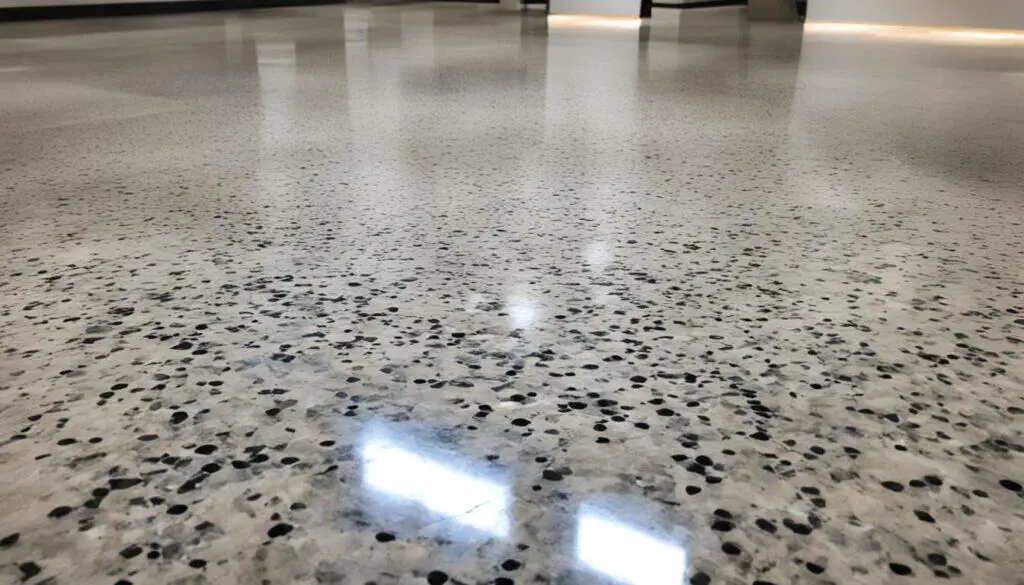
Tips for Cleaning and Preventing Stains on Countertops and Surfaces
Keeping your countertops and surfaces clean and free of stains is essential for maintaining their beauty and longevity. By following these tips, you can effectively clean and prevent stains on a variety of surfaces.
Dusting Regularly
To prevent the buildup of dirt and grime, it’s important to dust your countertops and surfaces regularly. Use a soft, lint-free cloth or a microfiber duster to gently remove dust and debris. Pay extra attention to hard-to-reach areas and corners.
Using Mats and Rugs
Minimize the risk of stains from spills by placing mats or rugs on your countertops and surfaces. These can act as a barrier, absorbing any liquids and preventing them from seeping into the surface. Be sure to choose mats or rugs that are water-resistant and easy to clean.
Cleaning Solutions
When cleaning your countertops and surfaces, it’s crucial to use cleaning solutions that are specific to the material. Different surfaces require different care. For example, stone surfaces require gentle cleansers to avoid damage. Refer to the manufacturer’s recommendations or consult with a professional for the best cleaning solutions for your specific surfaces.
Regular Maintenance
Regular maintenance is key to keeping your countertops and surfaces in pristine condition. Wipe down surfaces with a mild detergent and warm water regularly to remove any spills or staining agents. Dry the surfaces thoroughly with a soft cloth to prevent water spots.
Preventive Measures
Take preventive measures to minimize the risk of stains on your countertops and surfaces. Use coasters or trivets under hot or wet items to protect the surface from heat or moisture damage. Avoid placing acidic or abrasive materials directly on the surface, as these can cause stains and scratches.
Avoid Harsh Cleaners
When cleaning your countertops and surfaces, avoid using general detergents or cleaners that contain acids, vinegar, chlorine, or ammonia on stone surfaces. These harsh chemicals can damage the surface and lead to discoloration or staining. Stick to mild detergents or cleaners specifically designed for your surfaces.
| Material | Cleaning Solution |
|---|---|
| Granite | Mild dish soap and water |
| Marble | Neutral pH cleaner |
| Quartz | Mild dish soap and water |
| Laminate | Mild dish soap and water |
By following these tips and adopting a regular cleaning routine, you can keep your countertops and surfaces looking their best for years to come.
Comprehensive Guide to Cleaning and Maintaining Stainless Steel Appliances
Cleaning and maintaining your stainless steel appliances is essential for ensuring their longevity and preserving their sleek appearance. With proper care and regular maintenance, you can keep your appliances looking clean and free of stains. Here are some tips to help you clean and maintain your stainless steel appliances:
Removing Fingerprints
Fingerprints are a common annoyance on stainless steel appliances, but they can be easily removed. Simply dampen a microfiber cloth with rubbing alcohol and gently wipe the surface in the direction of the grain. This will help prevent scratching and leave your appliances looking spotless.
Wiping with the Grain
When cleaning your stainless steel appliances, always remember to wipe with the grain. This means following the natural lines and brushing motions of the stainless steel surface. Wiping against the grain can cause scratches and damage the finish.
Giving Extra Shine with Lemon Oil or Olive Oil
If you want to give your stainless steel appliances an extra shine, you can use lemon oil or olive oil. Apply a small amount of oil to a clean cloth and gently rub it onto the surface of your appliances. This will help remove any residual streaks and leave behind a beautiful shine.
Avoiding Heat on Oil-Treated Surfaces
If you have treated your stainless steel appliances with lemon oil or olive oil, it’s important to avoid exposing them to direct heat. Heat can cause the oil to become sticky and attract dust and grime. As a result, it’s best to avoid placing hot pans or dishes directly on the surfaces.
Regular Maintenance and Cleaning
To keep your stainless steel appliances looking their best, it’s important to establish a regular maintenance and cleaning routine. Wipe them down with a damp cloth on a daily basis to remove any surface dirt and dust. For deeper cleaning, use mild dish soap and warm water. Avoid using abrasive or harsh cleaning solutions, as they can damage the stainless steel finish.
Follow these cleaning and maintenance tips to ensure that your stainless steel appliances remain clean, shiny, and stain-free. With regular care and attention, you can enjoy the timeless beauty of stainless steel in your home for years to come.
| Common Cleaning Mistakes to Avoid | Best Cleaning Practices |
|---|---|
| Cleaning with abrasive sponges or harsh chemicals | Use a soft microfiber cloth and gentle cleaning solutions |
| Scrubbing against the grain of the stainless steel | Always wipe with the grain to prevent scratching |
| Using oil treatments on surfaces exposed to heat | Avoid direct heat on oil-treated surfaces to prevent stickiness |
| Ignoring regular maintenance and cleaning | Establish a cleaning routine and wipe down appliances regularly |
Recommended Cleaning Techniques for Stone and Tile Floors
When it comes to cleaning stone and tile floors, using the right techniques is essential. Proper maintenance will not only keep your floors looking their best but also help prevent stains and damage. Here are some recommended cleaning techniques to keep your stone and tile floors in top condition:
Beware of pH Levels
Stone and tile floors require special care, and using cleaners with a neutral pH is crucial. These cleaners are specifically formulated to protect the natural beauty of the surfaces without causing any harm. Avoid using detergents or soaps, as they can dull the surface or leave behind residue.
Proper Cleaning Process
To clean your stone and tile floors effectively, follow these steps:
- Dust mop the floor to remove loose dirt and debris.
- Prepare a cleaning solution by diluting a neutral pH cleaner according to the manufacturer’s instructions.
- Use a mop or a soft microfiber cloth to apply the cleaning solution to the floor.
- Gently scrub any stubborn stains or grime with a soft brush or sponge.
- Rinse the floor with clean water to remove any residue.
- Dry the floor thoroughly with a clean cloth to avoid water spots.
Note: Always refer to the manufacturer’s instructions and test the cleaning solution in a small, inconspicuous area before applying it to the entire floor.
Preventative Measures
Prevention is key when it comes to maintaining the appearance of your stone and tile floors. Here are some preventative measures you can take:
- Regularly dust mop your floors to remove dirt and grit that can cause scratches.
- Place mats or rugs at entrances to trap dirt and prevent stains from spills.
- Wipe up spills and stains immediately to prevent them from penetrating the surface.
- Use furniture pads under heavy objects to prevent scratching.
Visual Representation of Stone and Tile Floor Cleaning Techniques:
| Cleaning Step | Description |
|---|---|
| Dust Mopping | Use a dry mop to remove loose dirt and debris from the floor surface. |
| Prepare Cleaning Solution | Dilute a neutral pH cleaner according to the manufacturer’s instructions. |
| Apply Cleaning Solution | Use a mop or soft cloth to apply the cleaning solution to the floor. |
| Gently Scrub | Use a soft brush or sponge to gently scrub any stubborn stains or grime. |
| Rinse with Water | Rinse the floor with clean water to remove any residue. |
| Dry with Cloth | Thoroughly dry the floor with a clean cloth to avoid water spots. |
By following these recommended cleaning techniques and preventative measures, you can maintain the beauty of your stone and tile floors for years to come.
Tips for Tackling Various Types of Stains on Stone Surfaces
When it comes to stain removal on stone surfaces, it’s important to understand that different stains require specific cleaning techniques. Whether you’re dealing with grease stains, organic stains, mold and mildew stains, or other types of stains, knowing the right approach can make all the difference in effectively restoring the appearance of your stone surfaces.
To help you tackle various types of stains on stone surfaces, here are some key cleaning techniques to keep in mind:
- Grease Stains: To remove grease stains from stone surfaces, liquid cleansers, mineral spirits, or acetone can be effective in breaking down the grease. Apply the chosen solution to the stain, gently scrub with a soft brush, and rinse thoroughly.
- Organic Stains: Organic stains, such as those caused by food, beverages, or plant matter, can be treated with a mixture of hydrogen peroxide and ammonia. Apply the solution to the stain, allow it to sit for a few minutes, scrub gently, and rinse well.
- Mold and Mildew Stains: When dealing with mold and mildew stains on stone surfaces, chlorine bleach or hydrogen peroxide can be effective solutions. Apply the chosen cleaner to the stain, let it sit for a while, scrub gently, and rinse thoroughly. Ensure proper ventilation when working with bleach.
- Avoid Alkaline Cleaners: It’s important to avoid using alkaline cleaners on stone surfaces, as they can cause damage and discoloration. Stick to pH-neutral or slightly acidic cleaners that are safe for stone.
Before choosing a cleaning technique, be sure to identify the type of stain you’re dealing with. This will help you select the most appropriate approach and avoid any potential damage to your stone surfaces.
Remember, prevention is key when it comes to stains on stone surfaces. Regular cleaning and maintenance, such as wiping up spills promptly and using coasters or mats, can help minimize the occurrence of stains. Additionally, consider sealing your stone surfaces to provide an extra layer of protection against future stains.
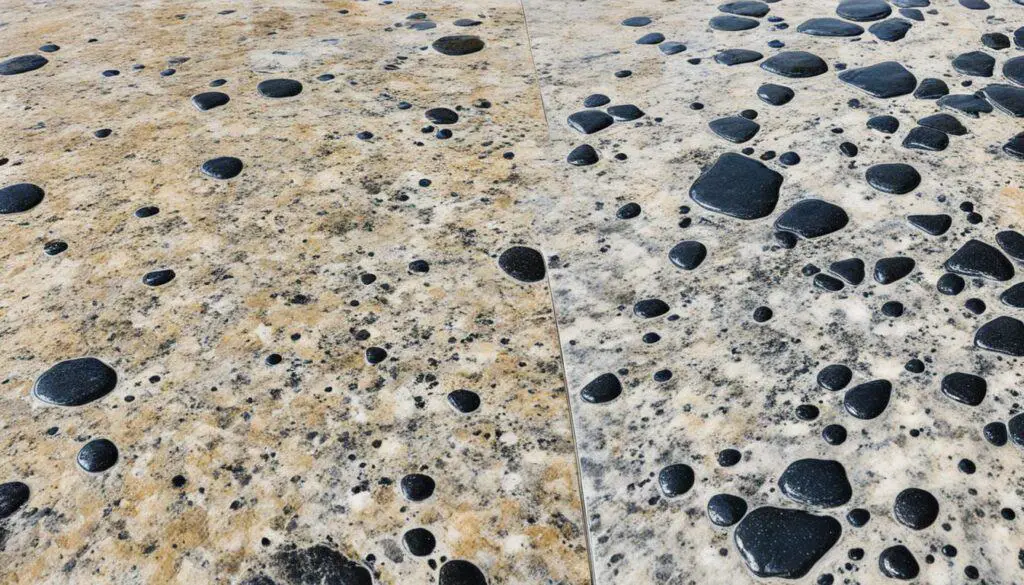
By following these tips and techniques, you can effectively tackle various types of stains on your stone surfaces and keep them looking clean and beautiful.
Important Cleaning Tips for Preventing Stains on Stone Surfaces
To keep your stone surfaces clean and stain-free, follow these essential cleaning tips:
- Dust regularly: Dusting your stone surfaces on a regular basis helps prevent the accumulation of dirt and debris, reducing the chances of stains forming. Use a soft, dry cloth or a dust mop to gently remove dust particles.
- Wipe spills immediately: Promptly clean up any spills on your stone surfaces to prevent them from soaking into the porous stone and causing stains. Use a clean, damp cloth and gently blot the area until it is dry.
- Place mats or rugs: Minimize the risk of stains from spills by placing mats or rugs on high traffic areas, such as near kitchen sinks or dining tables. These protective coverings can absorb liquids and prevent them from seeping into the stone.
- Ensure proper ventilation: Proper ventilation in bathrooms and other wet areas is essential for preventing the growth of mold and mildew, which can lead to stains on your stone surfaces. Use exhaust fans or open windows to promote airflow and reduce moisture.
- Use suitable cleaning solutions: When cleaning your stone surfaces, choose cleaning solutions that are specifically formulated for stone. Avoid harsh or acidic cleaners, as they can damage the stone and cause discoloration. Test any new cleaning product on a small, inconspicuous area before applying it to the entire surface.
- Maintain regular maintenance: Stay proactive in your stone surface care by regularly cleaning and maintaining them. This includes routine dusting, wiping spills, and following the appropriate cleaning techniques. By taking consistent preventative measures, you can help keep your stone surfaces looking their best.
By implementing these cleaning tips and preventative measures, you can ensure that your stone surfaces remain beautiful and stain-free for years to come.
Expert Advice on Cleaning and Maintaining Stainless Steel Appliances
Cleaning and maintaining stainless steel appliances is crucial for their longevity and appearance. To effectively clean your stainless steel appliances, follow these expert tips:
- Remove fingerprints with rubbing alcohol: Fingerprints can easily mar the surface of stainless steel appliances, but they can be easily removed. Dampen a soft cloth or sponge with rubbing alcohol and gently wipe the surface to remove fingerprints and smudges.
- Apply cleaning solutions with the grain: When using cleaning solutions, it’s important to apply them with the grain of the stainless steel to avoid scratching the surface. Use a soft cloth or sponge and follow the direction of the grain.
- Polish with lemon oil or olive oil: For extra shine and protection, you can polish your stainless steel appliances with lemon oil or olive oil. Apply a small amount to a soft cloth and gently rub the surface in the direction of the grain.
- Follow the grain direction: When cleaning stainless steel surfaces, always follow the grain direction. Cleaning against the grain can result in scratches and damage to the surface. Pay close attention to the direction of the grain and clean accordingly.
- Regular maintenance and cleaning: To keep your stainless steel appliances in top condition, regular maintenance and cleaning are essential. Wipe down the surfaces regularly with a mild detergent and warm water, followed by a thorough rinse and dry.
By following these expert tips, you can keep your stainless steel appliances looking clean, shiny, and free from fingerprints. Regular maintenance and cleaning are key to maintaining the pristine appearance of your stainless steel appliances.
Cleaning and Maintaining Stainless Steel Appliances – Expert Tips and Advice
Proven Techniques for Cleaning and Maintaining Stone Countertops
When it comes to stone countertops, proper cleaning techniques and regular maintenance are essential for keeping them looking their best. By following these proven techniques, you can effectively clean and maintain your stone countertops, preventing stains and preserving their appearance.
1. Choose Gentle Cleansers
Stone countertops require gentle cleansers specifically formulated for these surfaces. Avoid using harsh chemicals or abrasive cleaners that can damage the stone. Opt for mild detergents or natural stone cleaners that will effectively clean your countertops without causing any harm.
2. Routine Cleaning is Key
Regularly cleaning your stone countertops is crucial for preventing stains. Develop a routine of wiping down your countertops with a mild detergent after each use. This simple step will help remove any spills or residue, keeping your countertops clean and preventing buildup.
3. Wipe Down After Use
After each use, take a moment to wipe down your stone countertops with a soft, damp cloth. This will help remove any remaining dirt or debris and prevent it from settling into the pores of the stone. By practicing this habit, you can maintain the cleanliness of your countertops on a daily basis.
4. Reseal Your Countertops
To protect your stone countertops from staining and maintain their appearance, it’s essential to reseal them every few years. Resealing creates a protective barrier that helps prevent liquids and stains from penetrating the stone. By following the manufacturer’s recommendations for resealing, you can ensure the longevity of your countertops.
5. Regular Maintenance
In addition to routine cleaning and resealing, regular maintenance is key for keeping your stone countertops in optimal condition. Avoid placing hot pans directly on the surface, as it can cause thermal shock and potentially damage the stone. Use cutting boards when preparing food to prevent scratches, and immediately clean up spills to prevent staining.
| Cleaning Technique | Benefits |
|---|---|
| Routine cleaning with mild detergent | Prevents stains and maintains cleanliness |
| Resealing every few years | Protects against staining and maintains appearance |
| Avoiding direct heat and using cutting boards | Prevents damage and scratches |
By incorporating these proven techniques into your cleaning routine, you can ensure that your stone countertops remain beautiful and free from stains. Following gentle cleaning practices, routine maintenance, and regular resealing will help preserve the natural beauty of your stone countertops for years to come.
Effective Tips for Cleaning and Maintaining Stainless Steel Appliances
Keeping your stainless steel appliances clean and well-maintained is important for their longevity and appearance. By following these effective tips, you can ensure that your appliances stay in pristine condition.
Remove Fingerprints with Rubbing Alcohol
Fingerprints can be unsightly and can diminish the overall look of your stainless steel appliances. To remove fingerprints, simply dampen a cloth with rubbing alcohol and gently wipe the surface. This will help remove the oils and smudges, leaving your appliances looking clean and fingerprint-free.
Wipe with the Grain to Avoid Scratches
When cleaning your stainless steel appliances, always remember to wipe with the grain. This helps prevent scratches and maintains the smooth and polished look of the metal. Use a soft cloth or microfiber cloth to gently wipe in the direction of the grain.
Enhance Shine with Lemon Oil or Olive Oil
To give your stainless steel appliances an extra shine, you can apply lemon oil or olive oil. Simply put a few drops of oil on a cloth and gently rub it onto the surface of your appliances. This will help restore the luster and brightness of the stainless steel.
Regular Maintenance for Pristine Appliances
To keep your stainless steel appliances looking their best, regular maintenance is key. Make it a habit to wipe down your appliances regularly with a soft cloth or microfiber cloth. This will help remove any dirt, grime, or smudges that may accumulate over time. For more thorough cleaning, you can use mild dish soap mixed with water.
| Tip | Description |
|---|---|
| Remove Fingerprints | Use rubbing alcohol and a cloth to wipe away fingerprints. |
| Wipe with the Grain | Gently wipe in the direction of the grain to avoid scratches. |
| Enhance Shine | Apply lemon oil or olive oil for a bright and shiny finish. |
| Regular Maintenance | Wipe down regularly and clean with mild dish soap as needed. |
By following these cleaning tips and incorporating regular maintenance into your routine, you can keep your stainless steel appliances looking their best for years to come.
Essential Cleaning Techniques for Stone and Tile Floors
When it comes to maintaining the beauty of your stone and tile floors, proper cleaning techniques are crucial. Regular cleaning with neutral pH cleaners will help preserve the appearance of the floors and prevent damage.
Routine cleaning is an essential part of floor maintenance. By dusting the floors regularly with a clean, non-treated dry mop, you can remove dirt and debris that can scratch the surface. It is also recommended to use mats or rugs in high traffic areas and entrances to minimize stains from dirt and moisture.
Preventative measures can go a long way in preserving the appearance of your stone and tile floors. Regular dust mopping and using mats or rugs will help minimize stains and damage. It is also important to avoid using acidic or abrasive cleaners, as these can cause discoloration or scratching.
To protect against stains and maintain the appearance of your stone floors, it is recommended to reseal them every few years. This will provide an additional layer of protection and make routine cleaning more effective.
Proper cleaning techniques and regular maintenance are key to keeping your stone and tile floors looking their best. By following these essential cleaning tips, you can enjoy the beauty and longevity of your floors for years to come.
Routine Cleaning Checklist for Stone and Tile Floors
| Cleaning Task | Frequency |
|---|---|
| Dust mop or sweep the floors | At least once a week |
| Clean spills immediately | As soon as they occur |
| Use a neutral pH cleaner | As needed |
| Wipe dry with a clean cloth | After cleaning |
| Reseal the floors | Every few years |
Pro Tip: To remove tough stains from your stone or tile floors, create a paste using baking soda and water. Apply the paste to the stained area, let it sit for a few minutes, then scrub gently with a soft brush before rinsing.
Conclusion
Removing black stains from various surfaces is achievable by implementing effective cleaning techniques. Whether you are dealing with stainless steel appliances, toilets, sinks, showers, or stone surfaces, following specific cleaning methods and regular maintenance can ensure spotless surfaces. By using vinegar and baking soda for tough stains and incorporating preventative measures like regular cleaning and proper care, you can maintain the cleanliness and longevity of your surfaces.
When it comes to keeping your surfaces looking pristine, it’s important to stay proactive. Take advantage of the cleaning tips provided throughout this article to tackle black stain removal effectively. Remember to use the right cleaning solutions and techniques based on the surface you are dealing with. Regular maintenance and preventative measures like wiping spills promptly, using mats or rugs, and resealing stone surfaces can help prevent stains and maintain the beauty of your items.
By implementing these cleaning tips and preventative measures, you can achieve and maintain spotless surfaces in your home or office. With a little effort and consistency, you can keep your appliances, toilets, sinks, showers, and stone surfaces looking their best, ensuring a clean and inviting environment.
FAQ
What are some tips for removing black stains from various surfaces?
To remove black stains, you can use specific cleaning techniques depending on the surface. For stainless steel appliances, use a microfiber cloth and water for daily cleaning, or vinegar and baking soda for tough stains. Toilet stains can be treated with vinegar and baking soda for hard water stains, or a pumice stone for rust stains. Sinks and showers can be cleaned with vinegar and baking soda for soap scum or lemon juice for hard water stains. Stone surfaces require different cleaning processes depending on the type of stain, such as liquid cleansers for oil-based stains, hydrogen peroxide and ammonia for organic stains, and ammonia or bleach for algae and mildew stains. Regular dust mopping and using mats or rugs can help prevent stains on stone floors, while stone countertops should be cleaned with gentle cleansers and resealed every few years to prevent stains. Cleaning stainless steel appliances requires rubbing alcohol for fingerprints and lemon oil or olive oil for extra shine.
How do I remove water stains from stainless steel appliances?
For daily cleaning and removing water stains from stainless steel appliances, you can use a microfiber cloth and water. For extra grime, dish soap can be used. If the stains are tough, distilled white vinegar and baking soda can be effective. Commercial stain removal products and scratch-removal kits specifically designed for stainless steel can also be helpful. Regular maintenance and cleaning can prevent the buildup of stains and keep your appliances looking pristine.
What are some techniques for removing stubborn toilet stains?
Different types of toilet stains require different cleaning techniques. Hard water stains can be treated with vinegar and baking soda. Rust stains may require a pumice stone and careful scrubbing. Mold and mildew stains can be removed with vinegar and ammonia. Regular maintenance and prevention, such as using a toilet bowl cleaner, can help avoid stubborn stains. It’s important to test cleaning products before applying them on a large area and to follow safety precautions.
How can I remove stains from sinks and showers?
Stains in sinks and showers can be caused by soap scum, hard water deposits, and mineral buildup. Soap scum can be removed with vinegar and baking soda or a commercial soap scum remover. Hard water stains can be treated with lemon juice or vinegar. Mineral deposits can be removed with a vinegar and water solution. Regular cleaning and prevention, such as wiping down surfaces and using protective pads, can help prevent stains.
What are the common stains and cleaning processes for stone surfaces?
Different types of stains on stone surfaces require specific cleaning processes. Grease stains and oil-based stains can be treated with liquid cleansers, mineral spirits, or acetone. Organic stains can be removed with hydrogen peroxide and ammonia. Algae and mildew stains can be cleaned with a mixture of ammonia, bleach, or hydrogen peroxide and water. Ink stains can be removed with bleach, hydrogen peroxide, lacquer thinner, or acetone. Smoke stains may require a thorough cleaning with smoke removers. Always test cleaning products before applying them over large areas of stone surfaces.
How should I clean and maintain stone floors to prevent stains?
Stone floors should be regularly cleaned and maintained to prevent stains and damage. Dust mop the floors frequently using a clean, non-treated dry mop. Use mats or rugs inside and outside entrances to minimize dirt and grit. Vacuum cleaners with non-worn attachments or wheels can be used for larger hard surface areas. Use protective pads under furniture legs to prevent scratching. Regular cleaning with a properly diluted cleaning solution and wiping dry with a clean cloth is important. Stone floors should be resealed every few years to maintain their appearance and prevent staining.
What are some tips for cleaning and preventing stains on countertops and surfaces?
Countertops and surfaces should be regularly dusted to prevent the buildup of dirt and grime. Mats or rugs can be used to minimize stains from spills. Cleaning solutions specific to stone should be used to avoid damage. Regular maintenance and wiping down surfaces with mild detergent are recommended. Preventive measures such as using coasters and trivets can also help minimize stains. Avoid using general detergents or cleaners that contain acids, vinegar, chlorine, or ammonia on stone surfaces.
How should I clean and maintain stainless steel appliances?
Cleaning and maintaining stainless steel appliances is crucial for their longevity and appearance. Fingerprints can be removed with rubbing alcohol. Always wipe with the grain to prevent scratching. Lemon oil or olive oil can be used to give stainless steel appliances extra shine. Avoid using oil treatments on surfaces that conduct heat. Regular maintenance and cleaning with appropriate solutions are essential for keeping stainless steel appliances clean and free of stains.
What are the recommended cleaning techniques for stone and tile floors?
Stone and tile floors should be cleaned using neutral pH cleaners specifically formulated for these surfaces. Water alone is not sufficient and can leave behind residue. Detergents and soaps should be avoided as they can dull the surface or cause buildup. Routine cleaning with the appropriate cleaner and drying with a clean cloth is essential. Preventative measures, such as regular dust mopping and using mats or rugs, can help minimize stains and damage to the floors.
How do I tackle various types of stains on stone surfaces?
Different types of stains on stone surfaces require specific cleaning techniques. Oil-based stains can be treated with liquid cleansers, mineral spirits, or acetone. Organic stains can be removed with hydrogen peroxide and ammonia. Mold and mildew stains can be cleaned with chlorine bleach or hydrogen peroxide. Avoid using alkaline cleaners on stone surfaces. It’s important to identify the type of stain before choosing the appropriate cleaning technique.
What are some cleaning tips for preventing stains on stone surfaces?
Preventing stains on stone surfaces starts with regular dusting and wiping spills immediately. Mats or rugs can be used to minimize stains from spills. Proper ventilation in bathrooms and other wet areas can help reduce the growth of mold and mildew. It’s important to follow proper cleaning techniques and use appropriate cleaning solutions for stone surfaces. Regular maintenance and ventilation are key for preventing stains and maintaining the appearance of the stone.
What advice can you provide for cleaning and maintaining stainless steel appliances?
Cleaning and maintaining stainless steel appliances can be made easier with expert advice. Rubbing alcohol is effective for removing fingerprints. Cleaning solutions should be applied with the grain to avoid scratching. Lemon oil or olive oil can be used for extra shine. It’s important to follow the grain direction when cleaning stainless steel surfaces. Regular maintenance and cleaning are essential for keeping stainless steel appliances in top condition.
How do I clean and maintain stone countertops effectively?
Stone countertops can be effectively cleaned with gentle cleansers specifically formulated for these surfaces. Routine cleaning with a mild detergent is important for preventing stains. Regularly wiping down the countertops after use can help prevent buildup. Stone countertops should be resealed every few years to maintain their appearance and protect against staining. Regular maintenance and proper cleaning techniques are crucial for keeping stone countertops looking their best.
What tips do you have for cleaning and maintaining stainless steel appliances?
Cleaning and maintaining stainless steel appliances can be made easier with effective tips. Rubbing alcohol can be used to remove fingerprints. Wiping with the grain is important for avoiding scratches. Lemon oil or olive oil can be applied for extra shine. Regular maintenance, such as regular wiping and cleaning, is essential for keeping stainless steel appliances in pristine condition.
How should I clean and maintain stone and tile floors?
Stone and tile floors should be cleaned using neutral pH cleaners. Routine cleaning with the appropriate cleaner is important for maintaining the appearance of the floors. Preventative measures such as regular dusting and using mats or rugs can help minimize stains. Stone floors should be resealed every few years to protect against stains and maintain their appearance. Proper cleaning techniques and regular maintenance are essential for keeping stone and tile floors looking their best.
How do I remove different types of stains on stone surfaces?
Different types of stains on stone surfaces require specific cleaning techniques. Organic stains can be removed with hydrogen peroxide and ammonia, while oil-based stains can be treated with liquid cleansers, mineral spirits, or acetone. It’s important to identify the type of stain before choosing the appropriate cleaning process. Always test cleaning products on a small area before applying them to a larger surface.
How can I prevent stains on stone surfaces?
Preventing stains on stone surfaces starts with regular dusting and wiping spills immediately. Mats or rugs can be used to minimize stains from spills. Proper ventilation in bathrooms and other wet areas can help reduce the growth of mold and mildew. Following proper cleaning techniques and using appropriate cleaning solutions for stone surfaces is crucial. Regular maintenance and ventilation are key for preventing stains and maintaining the appearance of the stone.
What are some tips for cleaning and maintaining stainless steel appliances?
Cleaning and maintaining stainless steel appliances can be made easier with effective tips. Rubbing alcohol can be used to remove fingerprints. Wiping with the grain is important for avoiding scratches. Lemon oil or olive oil can be applied for extra shine. Regular maintenance, such as regular wiping and cleaning, is essential for keeping stainless steel appliances in top condition.
What are some essential cleaning techniques for stone and tile floors?
Stone and tile floors should be cleaned using neutral pH cleaners specifically formulated for these surfaces. Routine cleaning with the appropriate cleaner is important for maintaining the appearance of the floors. Preventative measures such as regular dusting and using mats or rugs can help minimize stains. Stone floors should be resealed every few years to protect against stains and maintain their appearance. Proper cleaning techniques and regular maintenance are essential for keeping stone and tile floors looking their best.
Do you have any tips for removing various types of stains from stone surfaces?
Different types of stains on stone surfaces require specific cleaning techniques. Oil-based stains can be treated with liquid cleansers, mineral spirits, or acetone. Organic stains can be removed with hydrogen peroxide and ammonia. Mold and mildew stains can be cleaned with chlorine bleach or hydrogen peroxide. Avoid using alkaline cleaners on stone surfaces. It’s important to identify the type of stain before choosing the appropriate cleaning technique.
How can I prevent stains on stone surfaces?
Preventing stains on stone surfaces starts with regular dusting and wiping spills immediately. Mats or rugs can be used to minimize stains from spills. Proper ventilation in bathrooms and other wet areas can help reduce the growth of mold and mildew. It’s important to follow proper cleaning techniques and use appropriate cleaning solutions for stone surfaces. Regular maintenance and ventilation are key for preventing stains and maintaining the appearance of the stone.
What are some expert tips for cleaning and maintaining stainless steel appliances?
Cleaning and maintaining stainless steel appliances can be made easier with effective tips. Rubbing alcohol is effective for removing fingerprints. Cleaning solutions should be applied with the grain to avoid scratching. Lemon oil or olive oil can be used for extra shine. It’s important to follow the grain direction when cleaning stainless steel surfaces. Regular maintenance and cleaning are essential for keeping stainless steel appliances in top condition.
What are some proven techniques for cleaning and maintaining stone countertops?
Stone countertops can be effectively cleaned with gentle cleansers specifically formulated for these surfaces. Routine cleaning with a mild detergent is important for preventing stains. Regularly wiping down the countertops after use can help prevent buildup. Stone countertops should be resealed every few years to maintain their appearance and protect against staining. Regular maintenance and proper cleaning techniques are crucial for keeping stone countertops looking their best.
What are some effective tips for cleaning and maintaining stainless steel appliances?
Cleaning and maintaining stainless steel appliances can be made easier with effective tips. Rubbing alcohol can be used to remove fingerprints. Wiping with the grain is important for avoiding scratches. Lemon oil or olive oil can be applied for extra shine. Regular maintenance, such as regular wiping and cleaning, is essential for keeping stainless steel appliances in pristine condition.
How should I clean and maintain stone and tile floors?
Stone and tile floors should be cleaned using neutral pH cleaners. Routine cleaning with the appropriate cleaner is important for maintaining the appearance of the floors. Preventative measures such as regular dusting and using mats or rugs can help minimize stains. Stone floors should be resealed every few years to protect against stains and maintain their appearance. Proper cleaning techniques and regular maintenance are essential for keeping stone and tile floors looking their best.
How do I remove different types of stains on stone surfaces?
Different types of stains on stone surfaces require specific cleaning techniques. Organic stains can be removed with hydrogen peroxide and ammonia, while oil-based stains can be treated with liquid cleansers, mineral spirits, or acetone. It’s important to identify the type of stain before choosing the appropriate cleaning process. Always test cleaning products on a small area before applying them to a larger surface.
How can I prevent stains on stone surfaces?
Preventing stains on stone surfaces starts with regular dusting and wiping spills immediately. Mats or rugs can be used to minimize stains from spills. Proper ventilation in bathrooms and other wet areas can help reduce the growth of mold and mildew. Following proper cleaning techniques and using appropriate cleaning solutions for stone surfaces is crucial. Regular maintenance and ventilation are key for preventing stains and maintaining the appearance of the stone.
What are some tips for cleaning and maintaining stainless steel appliances?
Cleaning and maintaining stainless steel appliances can be made easier with effective tips. Rubbing alcohol can be used to remove fingerprints. Wiping with the grain is important for avoiding scratches. Lemon oil or olive oil can be applied for extra shine. Regular maintenance, such as regular wiping and cleaning, is essential for keeping stainless steel appliances in top condition.
What are some essential cleaning techniques for stone and tile floors?
Stone and tile floors should be cleaned using neutral pH cleaners specifically formulated for these surfaces. Routine cleaning with the appropriate cleaner is important for maintaining the appearance of the floors. Preventative measures such as regular dusting and using mats or rugs can help minimize stains. Stone floors should be resealed every few years to protect against stains and maintain their appearance. Proper cleaning techniques and regular maintenance are essential for keeping stone and tile floors looking their best.
Do you have any tips for removing various types of stains from stone surfaces?
Different types of stains on stone surfaces require specific cleaning techniques. Oil-based stains can be treated with liquid cleansers, mineral spirits, or acetone. Organic stains can be removed with hydrogen peroxide and ammonia. Mold and mildew stains can be cleaned with chlorine bleach or hydrogen peroxide. Avoid using alkaline cleaners on stone surfaces. It’s important to identify the type of stain before choosing the appropriate cleaning technique.
How can I prevent stains on stone surfaces?
Preventing stains on stone surfaces starts with regular dusting and wiping spills immediately. Mats or rugs can be used to minimize stains from spills. Proper ventilation in bathrooms and other wet areas can help reduce the growth of mold and mildew. It’s important to follow proper cleaning techniques and use appropriate cleaning solutions for stone surfaces. Regular maintenance and ventilation are key for preventing stains and maintaining the appearance of the stone.
What are some expert tips for cleaning and maintaining stainless steel appliances?
Cleaning and maintaining stainless steel appliances can be made easier with effective tips. Rubbing alcohol is effective for removing fingerprints. Cleaning solutions should be applied with the grain to avoid scratching. Lemon oil or olive oil can be used for extra shine. It’s important to follow the grain direction when cleaning stainless steel surfaces. Regular maintenance and cleaning are essential for keeping stainless steel appliances in top condition.
What are some proven techniques for cleaning and maintaining stone countertops?
Stone countertops can be effectively cleaned with gentle cleansers specifically formulated for these surfaces. Routine cleaning with a mild detergent is important for preventing stains. Regularly wiping down the countertops after use can help prevent buildup. Stone countertops should be resealed every few years to maintain their appearance and protect against staining. Regular maintenance and proper cleaning techniques are crucial for keeping stone countertops looking their best.
What are some effective tips for cleaning and maintaining stainless steel appliances?
Cleaning and maintaining stainless steel appliances can be made easier with effective tips. Rubbing alcohol can be used to remove fingerprints. Wiping with the grain is important for avoiding scratches. Lemon oil or olive oil can be applied for extra shine. Regular maintenance, such as regular wiping and cleaning, is essential for keeping stainless steel appliances in pristine condition.
How should I clean and maintain stone and tile floors?
Stone and tile floors should be cleaned using neutral pH cleaners. Routine cleaning with the appropriate cleaner is important for maintaining the appearance of the floors. Preventative measures such as regular dusting and using mats or rugs can help minimize stains. Stone floors should be resealed every few years to protect against stains and maintain their appearance. Proper cleaning techniques and regular maintenance are essential for keeping stone and tile floors looking their best.
How do I remove different types of stains on stone surfaces?
Different types of stains on stone surfaces require specific cleaning techniques. Organic stains can be removed with hydrogen peroxide and ammonia, while oil-based stains can be treated with liquid cleansers, mineral spirits, or acetone. It’s important to identify the type of stain before choosing the appropriate cleaning process. Always test cleaning products on a small area before applying them to a larger surface.
How can I prevent stains on stone surfaces?
Preventing stains on stone surfaces starts with regular dusting and wiping spills immediately. Mats or rugs can be used to minimize stains from spills. Proper ventilation in bathrooms and other wet areas can help reduce the growth of mold and mildew. Following proper cleaning techniques and using appropriate cleaning solutions for stone surfaces is crucial. Regular maintenance and ventilation are key for preventing stains and maintaining the appearance of the stone.
What are some tips for cleaning and maintaining stainless steel appliances?
Cleaning and maintaining stainless steel appliances can be made easier with effective tips. Rubbing alcohol can be used to remove fingerprints. Wiping with the grain is important for avoiding scratches. Lemon oil or olive oil can be applied for extra shine. Regular maintenance, such as regular wiping and cleaning, is essential for keeping stainless steel appliances in top condition.
What are some essential cleaning techniques for stone and tile floors?
Stone and tile floors should be cleaned using neutral pH cleaners specifically formulated for these surfaces. Routine cleaning with the appropriate cleaner is important for maintaining the appearance of the floors. Preventative measures such as regular dusting and using mats or rugs can help minimize stains. Stone floors should be resealed every few years to protect against stains and maintain their appearance. Proper cleaning techniques and regular maintenance are essential for keeping stone and tile floors looking their best.
Do you have any tips for removing various types of stains from stone surfaces?
Different types of stains on stone surfaces require specific cleaning techniques. Oil-based stains can be treated with liquid cleansers, mineral spirits, or acetone. Organic stains can be removed with hydrogen peroxide and ammonia. Mold and mildew stains can be cleaned with chlorine bleach or hydrogen peroxide. Avoid using alkaline cleaners on stone surfaces. It’s important to identify the type of stain before choosing the appropriate cleaning technique.
How can I prevent stains on stone surfaces?
Preventing stains on stone surfaces starts with regular dusting and wiping spills immediately. Mats or rugs can be used to minimize stains from spills. Proper ventilation in bathrooms and other wet areas can help reduce the growth of mold and mildew. It’s important to follow proper cleaning techniques and use appropriate cleaning solutions for stone surfaces. Regular maintenance and ventilation are key for preventing stains and maintaining the appearance of the stone.
What are some expert tips for cleaning and maintaining stainless steel appliances?
Cleaning and maintaining stainless steel appliances can be made easier with effective tips. Rubbing alcohol is effective for removing fingerprints. Cleaning solutions should be applied with the grain to avoid scratching. Lemon oil or olive oil can be used for extra shine. It’s important to follow the grain direction when cleaning stainless steel surfaces. Regular maintenance and cleaning are essential for keeping stainless steel appliances in top condition.
What are some proven techniques for cleaning and maintaining stone countertops?
Stone countertops can be effectively cleaned with gentle cleansers specifically formulated for these surfaces. Routine cleaning with a mild detergent is important for preventing stains. Regularly wiping down the countertops after use can help prevent buildup. Stone countertops should be resealed every few years to maintain their appearance and protect against staining. Regular maintenance and proper cleaning techniques are crucial for keeping stone countertops looking their best.
What are some effective tips for cleaning and maintaining stainless steel appliances?
Cleaning and maintaining stainless steel appliances can be made easier with effective tips. Rubbing alcohol can be used to remove fingerprints. Wiping with the grain is important for avoiding scratches. Lemon oil or olive oil can be applied for extra shine. Regular maintenance, such as regular wiping and cleaning, is essential for keeping stainless steel appliances in pristine condition.
How should I clean and maintain stone and tile floors?
Stone and tile floors should be cleaned using neutral pH cleaners. Routine cleaning with the appropriate cleaner is important for maintaining the appearance of the floors. Preventative measures such as regular dusting and using mats or rugs can help minimize stains. Stone floors should be resealed every few years to protect against stains and maintain their appearance. Proper cleaning techniques and regular maintenance are essential for keeping stone and tile floors looking their best.
How do I remove different types of stains on stone surfaces?
Different types of stains on stone surfaces require specific cleaning techniques. Organic stains can be removed with hydrogen peroxide and ammonia, while oil-based stains can be treated with liquid cleansers, mineral spirits, or acetone. It’s important to identify the type of stain before choosing the appropriate cleaning process. Always test cleaning products on a small area before applying them to a larger surface.
How can I prevent stains on stone surfaces?
Preventing stains on stone surfaces starts with regular dusting and wiping spills immediately. Mats or rugs can be used to minimize stains from spills. Proper ventilation in bathrooms and other wet areas can help reduce the growth of mold and mildew. Following proper cleaning techniques and using appropriate cleaning solutions for stone surfaces is crucial. Regular maintenance and ventilation are key for preventing stains and maintaining the appearance of the stone.
What are some tips for cleaning and maintaining stainless steel appliances?
Cleaning and maintaining stainless steel appliances can be made easier with effective tips. Rubbing alcohol can be used to remove fingerprints. Wiping with the grain is important for avoiding scratches. Lemon oil or olive oil can be applied for extra shine. Regular maintenance, such as regular wiping and cleaning, is essential for keeping stainless steel appliances in top condition.
What are some essential cleaning techniques for stone and tile floors?
Stone and tile floors should be cleaned using neutral pH cleaners specifically formulated for these surfaces. Routine cleaning with the appropriate cleaner is important for maintaining the appearance of the floors. Preventative measures such as regular dusting and using mats or rugs can help minimize stains. Stone floors should be resealed every few years to protect against stains and maintain their appearance. Proper cleaning techniques and regular maintenance are essential for keeping stone and tile floors looking their best.
Do you have any tips for removing various types of stains from stone surfaces?
Different types of stains on stone surfaces require specific cleaning techniques. Oil-based stains can be treated with liquid cleansers, mineral spirits, or acetone. Organic stains can be removed with hydrogen peroxide and ammonia. Mold and mildew stains can be cleaned with chlorine bleach or hydrogen peroxide. Avoid using alkaline cleaners on stone surfaces. It’s important to identify the type of stain before choosing the appropriate cleaning technique.
How can I prevent stains on stone surfaces?
Preventing stains on stone surfaces starts with regular dusting and wiping spills immediately. Mats or rugs can be used to minimize stains from spills. Proper ventilation in bathrooms and other wet areas can help reduce the growth of mold and mildew. It’s important to follow proper cleaning techniques and use appropriate cleaning solutions for stone surfaces. Regular maintenance and ventilation are key for preventing stains and maintaining the appearance of the stone.
What are some expert tips for cleaning and maintaining stainless steel appliances?
Cleaning and maintaining stainless steel appliances can be made easier with effective tips. Rubbing alcohol is effective for removing fingerprints. Cleaning solutions should be applied with the grain to avoid scratching. Lemon oil or olive oil can be used for extra shine. It’s important to follow the grain direction when cleaning stainless steel surfaces. Regular maintenance and cleaning are essential for keeping stainless steel appliances in top condition.
What are some proven techniques for cleaning and maintaining stone countertops?
Stone countertops can be effectively cleaned with gentle cleansers specifically formulated for these surfaces. Routine cleaning with a mild detergent is important for preventing stains. Regularly wiping down the countertops after use can help prevent buildup. Stone countertops should be resealed every few years to maintain their appearance and protect against staining. Regular maintenance and proper cleaning techniques are crucial for keeping stone countertops looking their best.
What are some effective tips for cleaning and maintaining stainless steel appliances?
Cleaning and maintaining stainless steel appliances can be made easier with effective tips. Rubbing alcohol can be used to remove fingerprints. Wiping with the grain is important for avoiding scratches. Lemon oil or olive oil can be applied for extra shine. Regular maintenance, such as regular wiping and cleaning, is essential for keeping stainless steel appliances in pristine condition.
How should I clean and maintain stone and tile floors?
Stone and tile floors should be cleaned using neutral pH cleaners. Routine cleaning with the appropriate cleaner is important for maintaining the appearance of the floors. Preventative measures such as regular dusting and using mats or rugs can help minimize stains. Stone floors should be resealed every few years to protect against stains and maintain their appearance. Proper cleaning techniques and regular maintenance are essential for keeping stone and tile floors looking their best.
How do I remove different types of stains on stone surfaces?
Different types of stains on stone surfaces require specific cleaning techniques. Organic stains can be removed with hydrogen peroxide and ammonia, while oil-based stains can be treated with liquid cleansers, mineral spirits, or acetone. It’s important to identify the type of stain before choosing the appropriate cleaning process. Always test cleaning products on a small area before applying them to a larger surface.
How can I prevent stains on stone surfaces?
Preventing stains on stone surfaces starts with regular dusting and wiping spills immediately. Mats or rugs can be used to minimize stains from spills. Proper ventilation in bathrooms and other wet areas can help reduce the growth of mold and mildew. Following proper cleaning techniques and using appropriate cleaning solutions for stone surfaces is crucial. Regular maintenance and ventilation are key for preventing stains and maintaining the appearance of the stone.
What are some tips for cleaning and maintaining stainless steel appliances?
Cleaning and maintaining stainless steel appliances can be made easier with effective tips. Rubbing alcohol can be used to remove fingerprints. Wiping with the grain is important for avoiding scratches. Lemon oil or olive oil can be applied for extra shine. Regular maintenance, such as regular wiping and cleaning, is essential for keeping stainless steel appliances in top condition.
What are some essential cleaning techniques for stone and tile floors?
Stone and tile floors should be cleaned using neutral pH cleaners specifically formulated for these surfaces. Routine cleaning with the appropriate cleaner is important for maintaining the appearance of the floors. Preventative measures such as regular dusting and using mats or rugs can help minimize stains. Stone floors should be resealed every few years to protect against stains and maintain their appearance. Proper cleaning techniques and regular maintenance are essential for keeping stone and tile floors looking their best.
Do you have any tips for removing various types of stains from stone surfaces?
Different types of stains on stone surfaces require specific cleaning techniques. Oil-based stains can be treated with liquid cleansers, mineral spirits, or acetone. Organic stains can be removed with hydrogen peroxide and ammonia. Mold and mildew stains can be cleaned with chlorine bleach or hydrogen peroxide. Avoid using alkaline cleaners on stone surfaces. It’s important to identify the type of stain before choosing the appropriate cleaning technique.
How can I prevent stains on stone surfaces?
Preventing stains on stone surfaces starts with regular dusting and wiping spills immediately. Mats or rugs can be used to minimize stains from spills. Proper ventilation in bathrooms and other wet areas can help reduce the growth of mold and mildew. It’s important to follow proper cleaning techniques and use appropriate cleaning solutions for stone surfaces. Regular maintenance and ventilation are key for preventing stains and maintaining the appearance of the stone.
What are some expert tips for cleaning and maintaining stainless steel appliances?
Cleaning and maintaining stainless steel appliances can be made easier with effective tips. Rubbing alcohol is effective for removing fingerprints. Cleaning solutions should be applied with the grain to avoid scratching. Lemon oil or olive oil can be used for extra shine. It’s important to follow the grain direction when cleaning stainless steel surfaces. Regular maintenance and cleaning are essential for keeping stainless steel appliances in top condition.
What are some proven techniques for cleaning and maintaining stone countertops?
Stone countertops can be effectively cleaned with gentle cleansers specifically formulated for these surfaces. Routine cleaning with a mild detergent is important for preventing stains. Regularly wiping down the countertops after use can help prevent buildup. Stone countertops should be resealed every few years to maintain their appearance and protect against staining. Regular maintenance and proper cleaning techniques are crucial for keeping stone countertops looking their best.
What are some effective tips for cleaning and maintaining stainless steel appliances?
Cleaning and maintaining stainless steel appliances can be made easier with effective tips. Rubbing alcohol can be used to remove fingerprints. Wiping with the grain is important for avoiding scratches. Lemon oil or olive oil can be applied for extra shine. Regular maintenance, such as regular wiping and cleaning, is essential for keeping stainless steel appliances in pristine condition.
How should I clean and maintain stone and tile floors?
Stone and tile floors should be cleaned using neutral pH cleaners. Routine cleaning with the appropriate cleaner is important for maintaining the appearance of the floors. Preventative measures such as regular dusting and using mats or rugs can help minimize stains. Stone floors should be resealed every few years to protect against stains and maintain their appearance. Proper cleaning techniques and regular maintenance are essential for keeping stone and tile floors looking their best.
How do I remove different types of stains on stone surfaces?
Different types of stains on stone surfaces require specific cleaning techniques. Organic stains can be removed with hydrogen peroxide and ammonia, while oil-based stains can be treated with liquid cleansers, mineral spirits, or acetone. It’s important to identify the type of stain before choosing the appropriate cleaning process. Always test cleaning products on a small area before applying them to a larger surface.
How can I prevent stains on stone surfaces?
Preventing stains on stone surfaces starts with regular dusting and wiping spills immediately. Mats or rugs can be used to minimize stains from spills. Proper ventilation in bathrooms and other wet areas can help reduce the growth of mold and mildew. Following proper cleaning techniques and using appropriate cleaning solutions for stone surfaces is crucial. Regular maintenance and ventilation are key for preventing stains and maintaining the appearance of the stone.
What are some tips for cleaning and maintaining stainless steel appliances?
Cleaning and maintaining stainless steel appliances can be made easier with effective tips. Rubbing alcohol can be used to remove fingerprints. Wiping with the grain is important for avoiding scratches. Lemon oil or olive oil can be applied for extra shine. Regular maintenance, such as regular wiping and cleaning, is essential for keeping stainless steel appliances in top condition.
What are some essential cleaning techniques for stone and tile floors?
Stone and tile floors should be cleaned using neutral pH cleaners specifically formulated for these surfaces. Routine cleaning with the appropriate cleaner is important for maintaining the appearance of the floors. Preventative measures such as regular dusting and using mats or rugs can help minimize stains. Stone floors should be resealed every few years to protect against stains and maintain their appearance. Proper cleaning techniques and regular maintenance are essential for keeping stone and tile floors looking their best.
Do you have any tips for removing various types of stains from stone surfaces?
Different types of stains on stone surfaces require specific cleaning techniques. Oil-based stains can be treated with liquid cleansers, mineral spirits, or acetone. Organic stains can be removed with hydrogen peroxide and ammonia. Mold and mildew stains can be cleaned with chlorine bleach or hydrogen peroxide. Avoid using alkaline cleaners on stone surfaces. It’s important to identify the type of stain before choosing the appropriate cleaning technique.
How can I prevent stains on stone surfaces?
Preventing stains on stone surfaces starts with regular dusting and wiping spills immediately. Mats or rugs can be used to minimize stains from spills. Proper ventilation in bathrooms and other wet areas can help reduce the growth of mold and mildew. It’s important to follow proper cleaning techniques and use appropriate cleaning solutions for stone surfaces. Regular maintenance and ventilation are key for preventing stains and maintaining the appearance of the stone.


